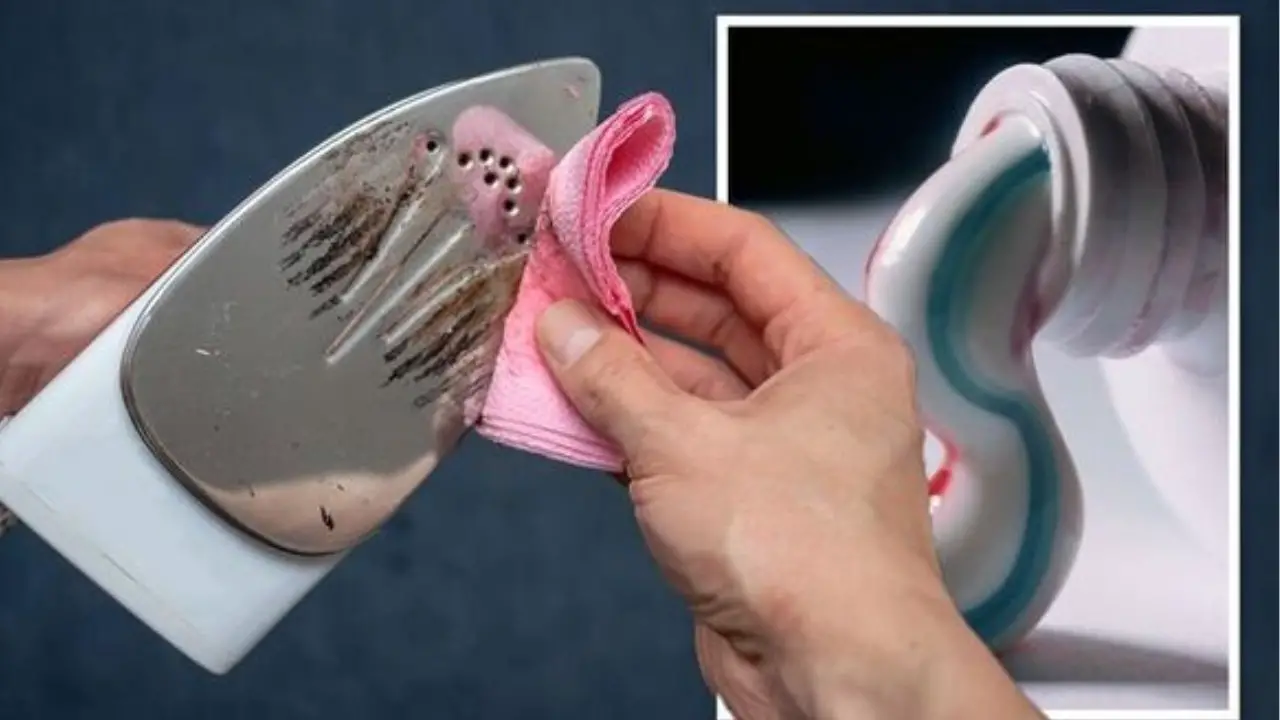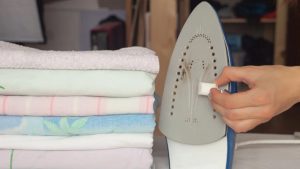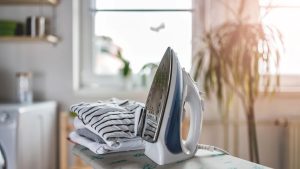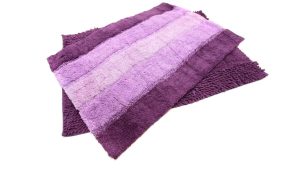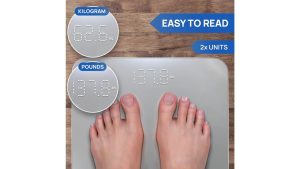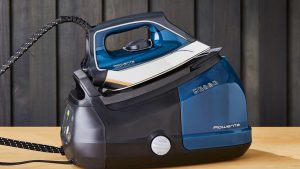To clean an iron soleplate, mix water and vinegar, apply the solution to the soleplate, and wipe it with a clean cloth. Use a cotton swab for hard-to-reach areas.
Cleaning an iron soleplate is essential for maintaining its effectiveness and preventing stains or residue from transferring to clothing. Proper maintenance will also extend the iron’s lifespan. Regularly cleaning the soleplate will ensure an efficient and smooth ironing process. Follow the recommended cleaning method to keep your iron in good working condition.
Clean soleplates not only enhance ironing performance but also help in achieving crisp and polished clothes. It is important to know the right cleaning techniques to ensure your clothes are free from any unwanted marks or stains.
Understanding The Importance Of A Clean Soleplate
Cleaning the soleplate of your iron is an essential task to ensure the optimal performance and longevity of your appliance. Understanding the importance of a clean soleplate goes beyond just maintaining its appearance; it also impacts its functionality and overall effectiveness. This article will delve into the significance of a clean soleplate, focusing on two key aspects: its role in preventing stains and damage, and its impact on heat distribution.
Role In Preventing Stains And Damage
A clean soleplate plays a crucial role in preventing unsightly stains on your garments while ironing. Over time, residue from fabric treatments, starch, and other substances can accumulate on the soleplate, leading to potential transfer onto your clothes. Additionally, a dirty soleplate can also cause damage to more delicate fabrics, as any residue or grime can create snagging or burning during the ironing process.
Impact On Heat Distribution
The cleanliness of the soleplate directly affects the heat distribution across its surface. A dirty soleplate can result in uneven heat distribution, leading to certain areas being hotter or cooler than others. This can result in inefficient ironing and cause frustration, as some areas may not achieve the desired level of smoothness and neatness. Ensuring that the soleplate is free from residue and grime enables consistent heat distribution, resulting in better overall ironing performance.
Checking The Iron For Soiling
When it comes to ensuring your clothes look crisp and neat, a clean iron soleplate is essential. Checking the iron for soiling is the first step in maintaining a well-functioning iron. Proper care and maintenance will help extend the life of your iron and prevent unwanted stains on your clothes.
Signs Of A Dirty Soleplate
If you notice that your iron is leaving behind dark marks or stains on your clothes, it’s a clear sign that the soleplate is dirty. Additionally, a sticky or uneven glide over fabric can also indicate a soiled soleplate. These signs are important indicators that your iron needs a thorough cleaning.
Identifying Different Types Of Residue
Soiling on the iron soleplate can come in various forms. Identifying the type of residue will help determine the most effective cleaning method. Common types of residue include:
- Mineral deposits from hard water
- Melted synthetic fabrics
- Starch or residue from fabrics
Each type of residue requires a specific cleaning approach to ensure effective removal without damaging the soleplate.
Gathering Necessary Cleaning Materials
Cleaning the soleplate of an iron is essential to ensure it functions properly and doesn’t stain your clothes. Before starting the cleaning process, it’s important to gather the necessary cleaning materials. Having the right tools and cleaning solutions can make this task more manageable while ensuring the safety of the iron. Let’s delve into what you need to have on hand before cleaning the iron soleplate:
Suitable Cleaning Solutions And Tools
When it comes to selecting suitable cleaning solutions and tools to clean an iron soleplate, it’s important to consider the manufacturer’s instructions to avoid damaging the appliance. Here are some commonly used cleaning solutions and tools:
- Vinegar: A natural and effective cleaning agent that helps remove built-up residue on the soleplate.
- Baking Soda: A gentle abrasive that assists in scrubbing away stubborn stains without causing damage.
- Cotton Swabs: Ideal for reaching tight spots and corners of the soleplate for thorough cleaning.
- Microfiber Cloth: Non-abrasive and perfect for wiping off the cleaning solution from the soleplate.
Safety Precautions To Consider
Ensuring the safety of the individual cleaning the iron and the appliance itself is crucial. Before diving into the cleaning process, consider the following safety precautions:
- Unplug the Iron: Always unplug the iron from the power source to prevent any electrical accidents while handling the soleplate.
- Cool Down Completely: Allow the iron to cool down completely before starting the cleaning process to avoid burns or accidents.
- Ventilation: Clean the soleplate in a well-ventilated area to avoid inhaling fumes from the cleaning solutions.
Dry Cleaning Techniques
To clean the iron soleplate, start by making a paste of baking soda and water, then apply it to the soleplate. Next, use a cloth to wipe off the paste and any residue. Finally, polish the soleplate with a clean cloth until it’s smooth and free of dirt.
Using A Magic Eraser
Magic erasers are a handy tool for removing sticky residue and stains from an iron soleplate. Simply dampen the magic eraser, making sure it’s not dripping wet, and gently rub it over the affected areas. The gentle abrasiveness of the magic eraser helps to lift off the dirt and grime without damaging the soleplate. Afterward, wipe the soleplate with a clean, damp cloth to remove any remaining residue.
Applying Baking Soda Paste
Baking soda is a natural and effective cleaner for an iron soleplate. To create a baking soda paste, mix a small amount of baking soda with water to form a thick, spreadable consistency. Apply the paste to the cooled soleplate, focusing on the areas with stubborn stains. Let it sit for a few minutes, then gently scrub the paste with a soft cloth or sponge. Finally, wipe off the paste with a damp cloth, ensuring all residue is removed.
Wet Cleaning Techniques
The soleplate of an iron often accumulates mineral deposits, rust, and sometimes stubborn stains. To keep your iron operating at its best, regular wet cleaning is essential. By properly using wet cleaning techniques, you can restore your iron soleplate to a shiny, smooth surface. Let’s explore the following effective methods:
Vinegar And Water Solution
One of the most natural and cost-effective ways to clean an iron soleplate is by using a mixture of vinegar and water. To prepare this solution, mix equal parts of white vinegar and water in a small bowl. Then, dip a clean cloth or sponge into the solution and gently wipe the soleplate. For challenging areas, you can use a cotton swab dampened in the solution. Be sure to wipe it clean with a damp cloth afterward to remove any vinegar residue.
Commercial Iron Cleaner Application
When dealing with stubborn stains or heavy mineral build-up, using a commercial iron cleaner can be highly effective. Follow the manufacturer’s instructions for applying the cleaner to the soleplate. Ensure the iron is unplugged and cool before applying the cleaner. After applying the commercial cleaner, wipe the soleplate with a damp cloth to remove any residue. “` I hope you find this HTML format suitable and SEO-optimized. Let me know if you need any further assistance!
Avoiding Common Mistakes
When it comes to cleaning the soleplate of your iron, avoiding common mistakes is crucial to maintaining its longevity and performance. Mishandling delicate soleplate materials and overusing aggressive cleaning products are two common errors that can result in damage to your iron. Let’s take a closer look at how to avoid these pitfalls.
Mishandling Delicate Soleplate Materials
Delicate soleplate materials, such as non-stick coatings or ceramic surfaces, require gentle care to prevent scratching or peeling. When cleaning these types of soleplates, avoid using abrasive cleaning tools, such as steel wool or harsh scrubbing pads. Instead, opt for soft, non-abrasive cloths or sponges to gently remove any residue.
Overusing Aggressive Cleaning Products
Using aggressive cleaning products, such as harsh chemical solvents or abrasive cleaners, can lead to damage and discoloration of the soleplate. When cleaning your iron, avoid overusing these products. Instead, opt for mild cleaners specifically formulated for irons, or gentle household ingredients like distilled white vinegar or baking soda.
Regular Maintenance Practices
To effectively clean an iron soleplate, start by unplugging the iron and allowing it to cool down. Then, gently wipe the surface with a damp cloth and baking soda, removing any residue. Finish by wiping it dry with a clean cloth, ensuring a smooth and clean ironing experience.
Regular maintenance is key to prolonging the life and performance of your iron. One effective practice is wiping the soleplate with a soft, damp cloth after each use, removing fabric fibers and residues. Ensure the iron is unplugged and cooled down to avoid burns. This routine prevents grime accumulation, keeping the soleplate smooth. Another crucial step is using distilled water instead of tap water to prevent mineral buildup and corrosion. This maintains the soleplate’s smooth surface, and flushing out the remaining water after each use further extends the iron’s life. Adopting these practices ensures your iron consistently delivers crisp, wrinkle-free results, making a significant difference in its performance and longevity.
Addressing Stubborn Stains
Targeted Cleaning Methods For Tough Residue
Dealing with stubborn stains on your iron soleplate, it requires a more targeted approach to effectively remove the residue. Here are some proven methods to tackle those stubborn marks:
- Vinegar Solution: Create a solution of equal parts vinegar and water. Dip a clean cloth into the solution and gently rub the stained areas of the soleplate. The acidic properties of vinegar help to dissolve tough mineral deposits and stains.
- Baking Soda Paste: Mix baking soda with water to create a paste. Apply the paste to the stained areas and gently scrub with a soft cloth or sponge. The mild abrasive nature of baking soda helps to lift and remove stubborn residue.
- Commercial Soleplate Cleaner: If the above methods do not yield the desired results, consider using a commercial soleplate cleaner. Follow the manufacturer’s instructions for application and ensure to thoroughly wipe off any remnants of the cleaner before using the iron again.
Preventive Measures To Reduce Future Staining
Preventing future staining on your iron soleplate is key to maintaining its optimal performance. Implement these preventive measures to minimize the risk of stubborn stains:
- Use Distilled Water: Minimize mineral buildup by using distilled or demineralized water in your iron. This will reduce the chances of mineral deposits forming on the soleplate.
- Clean Regularly: Incorporate regular cleaning of the soleplate into your iron maintenance routine. Wipe the soleplate with a damp cloth after each use, especially if you have been ironing at high temperatures.
- Proper Storage: Allow the iron to fully cool before storing it. Store the iron in an upright position to prevent any water or residue from accumulating on the soleplate.
Frequently Asked Questions On How To Clean Iron Soleplate
How Do You Clean A Burnt Iron Soleplate?
To clean a burnt iron soleplate, make a paste of baking soda and water. Apply the paste to the soleplate, scrub with a soft cloth, and wipe clean with a damp cloth. Alternatively, use vinegar and water to remove any leftover residue.
Always ensure the iron is unplugged and cool before cleaning.
How Do I Get The Black Stuff Off The Bottom Of My Iron?
To remove the black stuff from the bottom of your iron, mix equal parts of vinegar and baking soda. Scrub the bottom with the paste, then wipe it clean with a damp cloth. Wipe with a dry cloth before using.
Does Vinegar Clean an Iron Plate?
Yes, vinegar can effectively clean an iron plate by removing built-up residue and stains. Simply mix equal parts of vinegar and water, then apply the solution to the iron plate and wipe clean. Repeat if necessary for stubborn stains.
How Do You Remove Sticky Residue From The Bottom Of An Iron?
To remove sticky residue from an iron, mix equal parts of water and vinegar. Pour the solution into the iron’s water reservoir and set it to steam. Press the steam function until the reservoir is empty, then refill it with clean water and repeat the process.
Wipe off any remaining residue with a cloth.
Can I use vinegar to clean my iron soleplate?
Yes, a mixture of vinegar and water can effectively remove mineral deposits. Ensure the iron is unplugged and cool.
What should I do for sticky residues on the soleplate?
Use a damp cloth with a small amount of baking soda to gently scrub away sticky residues.
Is it safe to use a metal utensil to clean the soleplate?
No, avoid metal utensils as they can scratch the soleplate. Use a soft cloth or sponge instead.
Can I clean the soleplate while the iron is hot?
It’s not recommended. Wait for the iron to cool down before cleaning to prevent burns or damage.
How often should I clean my iron soleplate?
Regularly clean the soleplate to prevent build-up. Monthly cleaning is a good practice for optimal iron performance.
Can I use commercial iron cleaners for the soleplate?
Yes, follow the product instructions. Ensure the iron is unplugged and cooled before application.
What if there are burn marks on the soleplate?
Dampen a cloth with vinegar and gently rub the burn marks. For persistent marks, use a mixture of baking soda and water.
How do I clean steam vents on the soleplate?
Use a cotton swab dipped in vinegar to clear clogged steam vents. Wipe away any residue with a soft cloth.
Can I immerse the entire iron in water for cleaning?
No, avoid immersing the iron in water. Clean only the soleplate with damp cloths or appropriate cleaning solutions.
What preventive measures can I take to keep the soleplate clean?
Empty the water reservoir after each use, use distilled water, and store the iron upright to prevent water leakage and build-up.
Conclusion
Maintaining a clean iron soleplate is essential for effective ironing. Using simple household items like vinegar or baking soda can easily remove stubborn residue. Remember to regularly wipe the soleplate after use and avoid harsh cleaning agents that could damage it.
By following these tips, you can extend the lifespan of your iron and keep your clothes looking their best.

